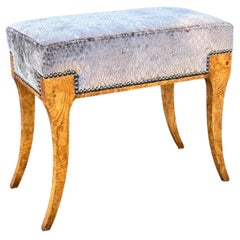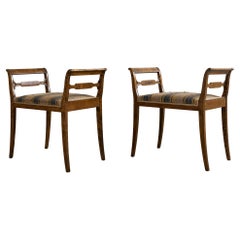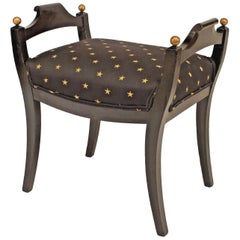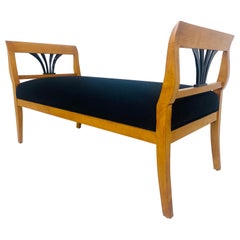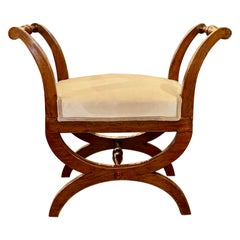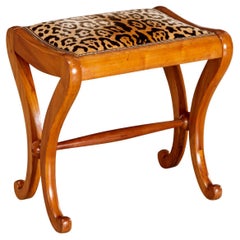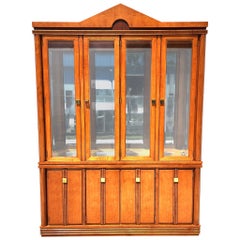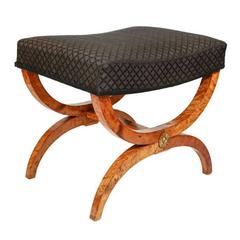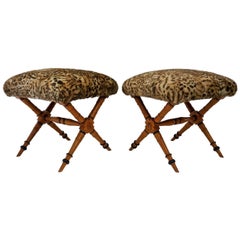Biedermeier Style Bench
21st Century and Contemporary Canadian Stools
Fabric, Burl
Antique 19th Century German Biedermeier Benches
Fabric, Maple
20th Century Swedish Biedermeier Benches
Upholstery, Wood
Vintage 1980s American Biedermeier Benches
Wood
Antique 19th Century German Biedermeier Benches
Upholstery, Walnut
Vintage 1940s French Biedermeier Benches
Fabric, Upholstery, Wood
Vintage 1980s American Biedermeier Cabinets
Satinwood, Glass
Recent Sales
Antique 19th Century Austrian Biedermeier Benches
Mid-20th Century Italian Biedermeier Benches
Fabric, Wood
Antique 1880s German Benches
Walnut
Antique 19th Century German Chairs
Antique Late 19th Century German Biedermeier Benches
Fabric, Wood, Walnut
21st Century and Contemporary Biedermeier Benches
Birch
Antique 19th Century Benches
Antique 19th Century Austrian Biedermeier Settees
Wood, Upholstery
Vintage 1980s Unknown Biedermeier Stools
Wood, Maple, Lacquer
Early 20th Century Biedermeier Settees
Walnut
Antique Mid-19th Century Austrian Biedermeier Bergere Chairs
Walnut
Antique 19th Century French Biedermeier Settees
Wood, Upholstery
Antique Mid-19th Century Swedish Karl Johan Sofas
Upholstery, Wood
Early 20th Century Swedish Biedermeier Center Tables
Birch
Vintage 1960s American Biedermeier Benches
Metal, Gold Leaf
Mid-20th Century German Biedermeier Benches
Beech
21st Century and Contemporary Biedermeier Benches
Upholstery, Burl
20th Century Biedermeier Benches
Fruitwood
Early 20th Century Austrian Biedermeier Benches
Fabric, Maple
Antique Late 19th Century Austrian Biedermeier Benches
Wood
Vintage 1970s Italian Regency Benches
Walnut
Vintage 1940s European Biedermeier Benches
Walnut
Antique 19th Century Austrian Benches
Walnut
Antique 1890s Swedish Aesthetic Movement Sofas
Maple
Vintage 1950s Biedermeier Benches
Maple
20th Century Unknown Biedermeier Benches
Wood, Upholstery
Antique 19th Century French Benches
Cherry, Silk
Vintage 1940s Italian Biedermeier Benches
Upholstery, Wood
People Also Browsed
Antique 19th Century European Aesthetic Movement Beds and Bed Frames
Faux Bamboo, Pine
Antique 19th Century Japanese Edo Paintings and Screens
Brass
Antique 19th Century English Hepplewhite Demi-lune Tables
Wood
Antique 19th Century French French Provincial Desks and Writing Tables
Bronze
20th Century Chinoiserie Screens and Room Dividers
Brass
20th Century Italian Hollywood Regency Wall-mounted Sculptures
Ceramic
Antique 19th Century English Chinoiserie Vanities
Brass
20th Century French Country Farm Tables
Oak
Antique 19th Century Japanese Edo Paintings and Screens
Brass, Gold Leaf
20th Century Japanese Showa Paintings and Screens
Brass
20th Century American Organic Modern Lounge Chairs
Leather, Rattan, Oak
20th Century American Neoclassical Dining Room Chairs
Fabric, Wood
20th Century American Neoclassical Patio and Garden Furniture
Wrought Iron
20th Century French Country Dining Room Tables
Oak
Antique 19th Century Austrian Biedermeier Stools
Linen, Upholstery, Walnut
21st Century and Contemporary Organic Modern Dining Room Tables
Brass, Iron
Biedermeier Style Bench For Sale on 1stDibs
How Much is a Biedermeier Style Bench?
Finding the Right Seating for You
With entire areas of our homes reserved for “sitting rooms,” the value of quality antique and vintage seating cannot be overstated.
Fortunately, the design of side chairs, armchairs and other lounge furniture — since what were, quite literally, the early perches of our ancestors — has evolved considerably.
Among the earliest standard seating furniture were stools. Egyptian stools, for example, designed for one person with no seat back, were x-shaped and typically folded to be tucked away. These rudimentary chairs informed the design of Greek and Roman stools, all of which were a long way from Sori Yanagi's Butterfly stool or Alvar Aalto's Stool 60. In the 18th century and earlier, seats with backs and armrests were largely reserved for high nobility.
The seating of today is more inclusive but the style and placement of chairs can still make a statement. Antique desk chairs and armchairs designed in the style of Louis XV, which eventually included painted furniture and were often made of rare woods, feature prominently curved legs as well as Chinese themes and varied ornaments. Much like the thrones of fairy tales and the regency, elegant lounges crafted in the Louis XV style convey wealth and prestige. In the kitchen, the dining chair placed at the head of the table is typically reserved for the head of the household or a revered guest.
Of course, with luxurious vintage or antique furnishings, every chair can seem like the best seat in the house. Whether your preference is stretching out on a plush sofa, such as the Serpentine, designed by Vladimir Kagan, or cozying up in a vintage wingback chair, there is likely to be a comfy classic or contemporary gem for you on 1stDibs.
With respect to the latest obsessions in design, cane seating has been cropping up everywhere, from sleek armchairs to lounge chairs, while bouclé fabric, a staple of modern furniture design, can be seen in mid-century modern, Scandinavian modern and Hollywood Regency furniture styles.
Admirers of the sophisticated craftsmanship and dark woods frequently associated with mid-century modern seating can find timeless furnishings in our expansive collection of lounge chairs, dining chairs and other items — whether they’re vintage editions or alluring official reproductions of iconic designs from the likes of Hans Wegner or from Charles and Ray Eames. Shop our inventory of Egg chairs, designed in 1958 by Arne Jacobsen, the Florence Knoll lounge chair and more.
No matter your style, the collection of unique chairs, sofas and other seating on 1stDibs is surely worthy of a standing ovation.
- 1stDibs ExpertMarch 22, 2022Biedermeier-style furniture is a type of furniture that emerged from Germany during the 19th century. The pieces were the antithesis of the opulent French designs of the time, displaying clean, simple lines and forms that emphasized functionality. Furniture in this style became popular again in the 1970s. Shop a selection of Biedermeier-style furniture on 1stDibs.
- 1stDibs ExpertOctober 7, 2024The difference between the Biedermeier and Empire styles lies largely in the characteristics most commonly associated with them. Although these two furniture styles both emerged around 1815 and persisted into the 1840s, pieces associated with them have differing features. Developed in France, the Empire style emphasized ornamentation and grandeur, with furniture makers often drawing inspiration from ancient Roman forms. Dark woods were the most commonly used materials of the style. In Germany and other parts of Central Europe, artisans working in the Biedermeier style favored simplicity. They also tended to source woods locally and chose light finishes for their pieces. Explore a selection of Biedermeier and Empire furniture on 1stDibs.
Read More
20 Inviting Dining Rooms Perfectly Arranged for Entertaining
Top interior designers show — and tell — us how to create delectable spaces for hosting dinner parties.
Nobody Puts This Sunny Sofa in a Corner
With its plush cushions, cane details and dazzlingly colorful back, it’s inviting from every angle.
The 21 Most Popular Mid-Century Modern Chairs
You know the designs, now get the stories about how they came to be.
Fred Rigby’s Modular Seating Can Be Configured in So Many Handy Ways
The plush Cove Slipper 2.5 Seater sofa is just one of many convenient combinations from the London-based maker.
This Chubby-Chic Quilted Stool Stands on Its Own Two Feet
Sam Klemick's cool stool is edgy, cozy and environmentally sustainable all at once.
Is Lionel Jadot the Willy Wonka of Upcycled Belgian Design?
From his massive collaborative workshop in a former paper factory, the designer concocts funky furniture from disused materials, as well as luxe hotel interiors like the new Mix Brussels.
Rock Your Cares Away on This Sunny Hand-Crocheted Swing
The boho-chic Enchanted Forest Swing, handmade by marginalized women from Turkey and Syria, is uplifting in every way.
Learn Why Designer Maarten Baas Set This Charles Rennie Mackintosh Chair on Fire
What happens when you do something to a piece of furniture that you shouldn’t? It becomes an entirely new object.
